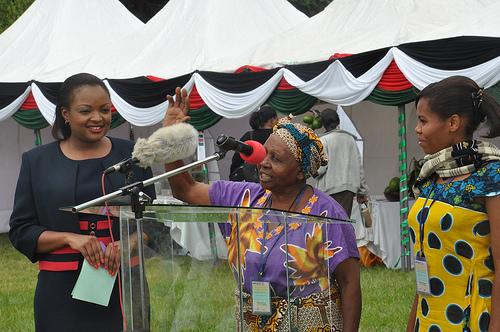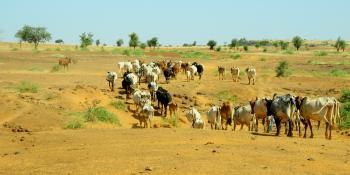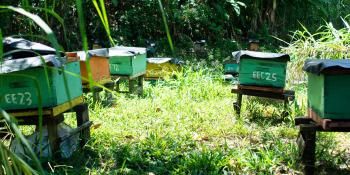Supporting grass-roots efforts key to climate change adaptation

At the recent East African Farmer Innovation Fair (EAFIF) in Nairobi, a group of high-spirited and motivated individuals presented their work towards better and more sustainable agriculture. The hard work they put into improving agriculture has made us think harder about how we can improve policies and funding, and how the message of these innovators can be used to reach people in rural areas around the world.
The innovations were geared towards many different aspects of agricultural farming, including improved technologies and techniques related to trees and crops, such as organic pest-control methods; soil and water management, such as terracing, draining soils and composting; livestock management, such as solar hatcheries and low-cost feeds; and marketing, such as cell-phone apps.
Most of the innovations focused first on technical farming issues before institutional and marketing issues. As private sector firms tend to start with market demand before looking at technical issues, it would be useful to rethink this top down approach and start from the grassroots.
So who were the most innovative?
Paul Kabwama, from Uganda, developed his own organic pesticide using local plants, such as marigold and tobacco mixed with crushed red chilli. He created both a liquid solution, which he dilutes with water before putting on his crops, and a powder mix, which works better on cereals. His techniques can be adopted by other farmers and will reduce expenditure on pesticides.
Rahab Kithumbi, a farmer from Kenya, found that raising turkeys and local chickens together increased her chicken egg hatching rate from 70 per cent to 100 per cent when a female turkey broods over them. Female turkeys generally spend more time brooding than chickens, and as they are bigger, they can brood over 30 eggs while chickens can only brood over 10 to 12. Once both chicken and turkey eggs have hatched, the turkey chicks are raised by chickens. Ms. Kithumbi’s method has improved the quality and quantity of her chickens and turkeys.

Watch more photos from the event here.
These two examples are among many other equally successful innovations that were presented at the EAFIF and which will contribute to improving farming practices.
Without local innovation support funds and recognition from government officials and community members, many of these innovators would not have been able to accomplish their work. It is therefore clear that to encourage future innovations, policies and funding will have to focus on supporting collective actions.
Developing innovations is generally very time consuming. For example, Ms. Kithumbi has been studying the habits of chickens and turkeys since 2004. Because of the time investment required, ‘scaling-out’ information has been a challenge. Very small amounts of money encouraged the innovators to spread their knowledge and rewarded their hard work.
Further investment would be useful to support knowledge-sharing techniques, such as through videos, teacher and youth training and extension agents in order to reach farmers in rural areas. Increasing the visibility of these innovations would also make governments and the private sector more responsive to the great ideas these innovative individuals have.
Supporting grass-roots efforts is the key to climate change adaptation and mitigation. Through supportive knowledge-sharing practices, farmers can empower one another and improve their livelihoods. Developing innovations such as those at the Agricultural Innovation Fair is the first step, the next step is finding ways to implementing them across rural communities.
Read additional stories from this event:
Celebrating creative and innovative farmers from around East Africa
Collection of all stories from the East Africa Farmer Innovation Fair (EAFIF).
Patti Kristjanson is a Theme leader for CCAFS Theme: Linking research into action. Manon Verchot is an intern based in Nairobi, Kenya, also working on with bringing research into action that matters to farmer.



